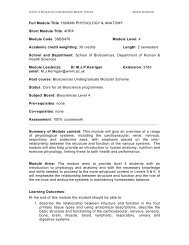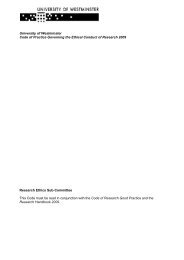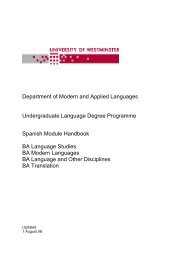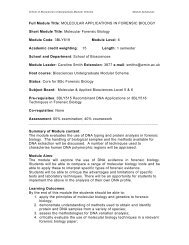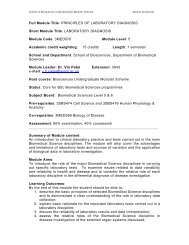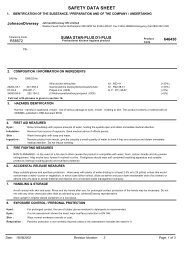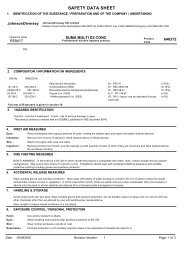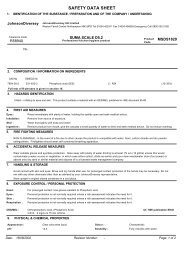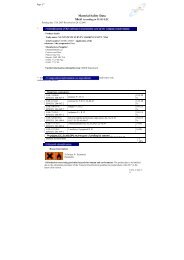CONTENTS 1. Introduction 1.1 Course Outline 1 1.2 Introduction ...
CONTENTS 1. Introduction 1.1 Course Outline 1 1.2 Introduction ...
CONTENTS 1. Introduction 1.1 Course Outline 1 1.2 Introduction ...
You also want an ePaper? Increase the reach of your titles
YUMPU automatically turns print PDFs into web optimized ePapers that Google loves.
<strong>Introduction</strong> to image quality. The image quality circle. Visual performance of imaging systems.<br />
<strong>Introduction</strong> to psychophysics.<br />
Image Quality Metrics. The observer's function, methods of determination, influence of noise, scaling<br />
methods and statistics.<br />
Image quality measurement in image processing and image compression. Digital image artefacts<br />
Performance criteria, distortion metrics.<br />
Set-up for psychophysical experiments. Characterisation and calibration of viewing conditions and<br />
output devices. Theory and implementation of psychophysical tests.<br />
Paired Comparisons. Types of paired comparison tests. Software. Numbers of observers. Analysis of<br />
data, Errors.<br />
Evaluation of thresholds. Measurement of fidelity. Just-noticeable-differences: image attributes &<br />
image quality. Data analysis. ‘The image quality ruler’.<br />
Scene Dependency in image quality. Scene selection. Scene content. Influence on image quality<br />
judgements.<br />
Image analysis. Measurement of scene characteristics. Incorporation in image quality studies/metrics.<br />
Teaching and Learning Methods:<br />
The module comprises lectures and seminars and supervised workshops and laboratory sessions.<br />
Assessment Rationale:<br />
The module is concerned with the objective and subjective evaluation of images. The written<br />
coursework is designed to support the learning process and to aid in the understanding of some<br />
challenging concepts, 40% (Learning outcomes 1-4).<br />
Self-directed practical work is designed to give the student experience in setting up and analysing the<br />
results from both subjective and objective evaluations, 60%. This will test learning outcomes 1-5.<br />
Assessment Criteria:<br />
The extent to which the student is able to demonstrate the ability to:<br />
• Interpret the terminology relevant to imaging performance and image quality.<br />
• Use appropriate formulae from theory to analyse data and interpret findings.<br />
• Understand models for image quality metrics.<br />
• Plan, carry out and report on experimental investigations.<br />
• Comment critically on results obtained, with due regard for experimental errors and the<br />
significance of the result.<br />
• Use research/reference literature as appropriate.<br />
Assessment Methods and Weightings:<br />
Written <strong>Course</strong>work 40%<br />
Laboratory Work 60%<br />
Written <strong>Course</strong>work may consist of an essay and a number of problems requiring a detailed and<br />
accurate analysis with justifications and appropriate assumptions. Some computer modelling may be<br />
required. Laboratory work is assessed by written reports from practical assignments.<br />
The student must demonstrate the ability to:<br />
• Understand and interpret an experimental brief and establish the appropriate experimental design.<br />
• Undertake reliable collection of data using suitable instrumentation.<br />
• Analyze the data in an accurate manner, and clearly present the relevant results.<br />
• Present sound discussions and conclusions on the work, in the light of other published results or<br />
expected outcomes.<br />
Sources:<br />
Essential reading<br />
C.N.Proudfoot (ed.) (1973) SPSE Handbook of Photographic Science and Engineering, 2 nd Ed., IS&T,<br />
Springfield, USA.<br />
J.C.Dainty and R.Shaw (1974) Image Science, Academic Press, London, England.<br />
DPI_Hbook 80 ©University of Westminster





